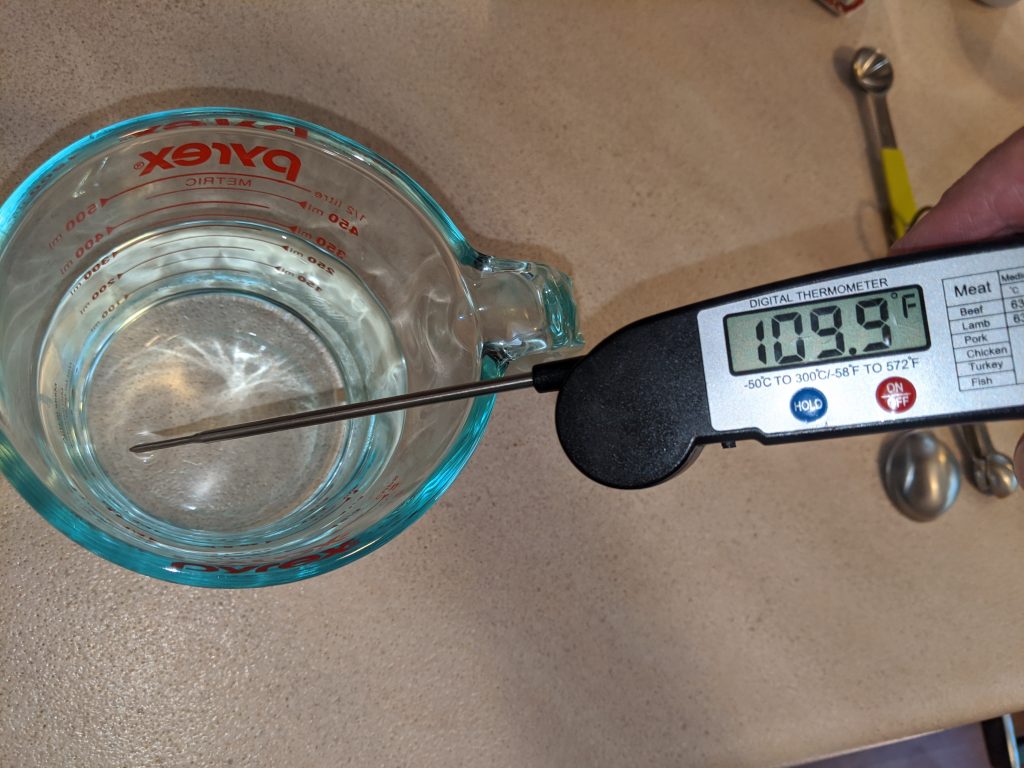
Using your quick-read thermometer, adjust your faucet temperature until it’s about 110° F, and then measure out 1-1/2 cups.
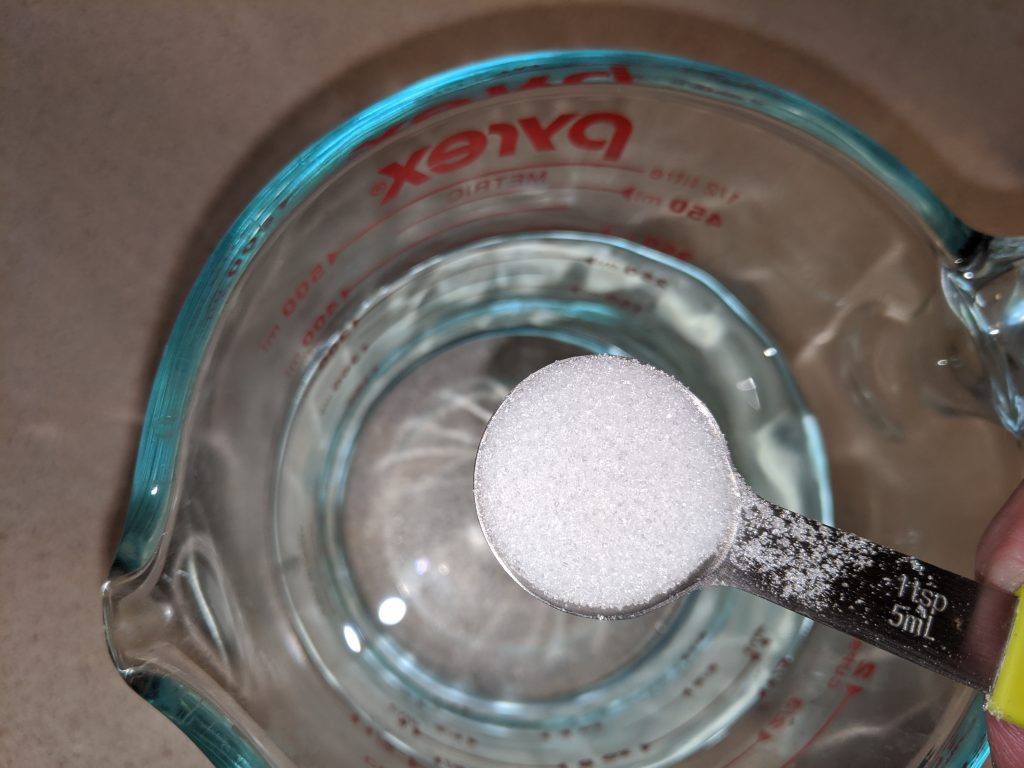
Add a teaspoon of sugar and stir until it’s all dissolved.
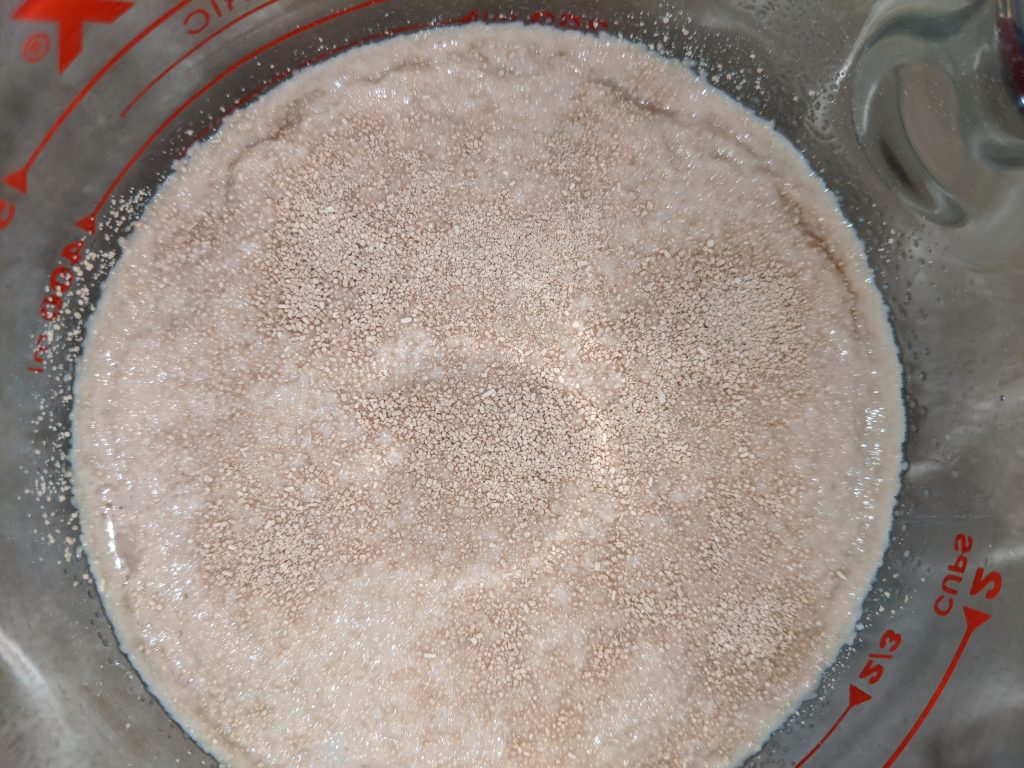
Sprinkle a packet of active dry yeast on the surface of the water and let it acclimate a while.
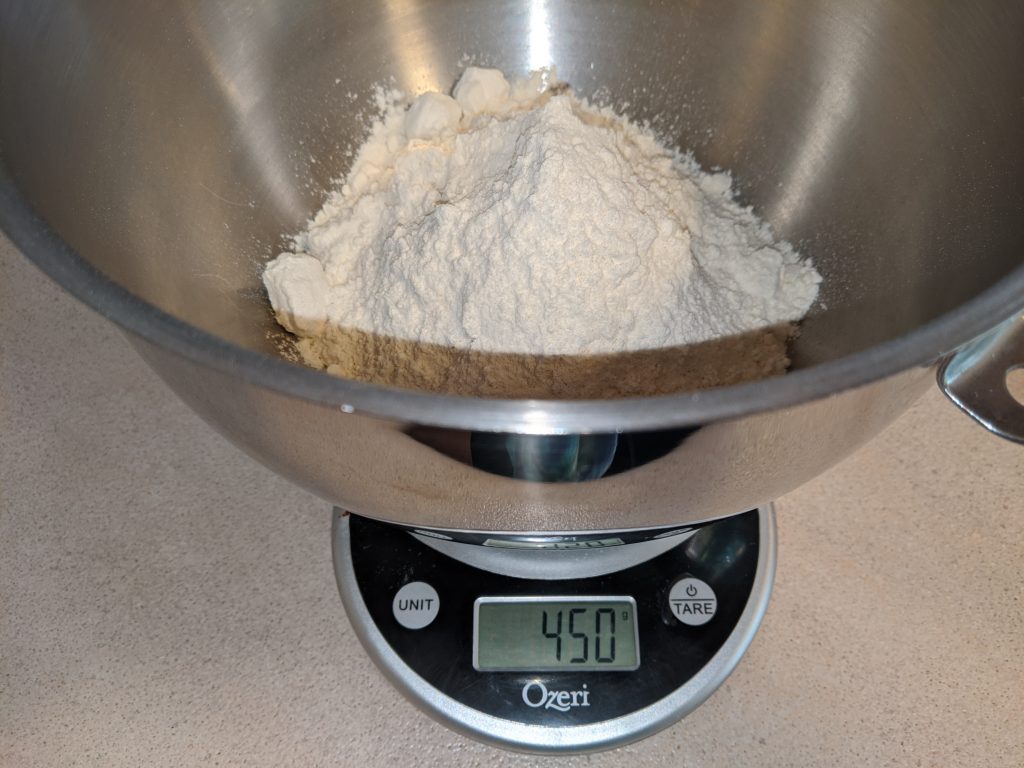
In the bowl of your stand mixer, weigh 450 grams of bread flour, or measure 3-3/4 cups.
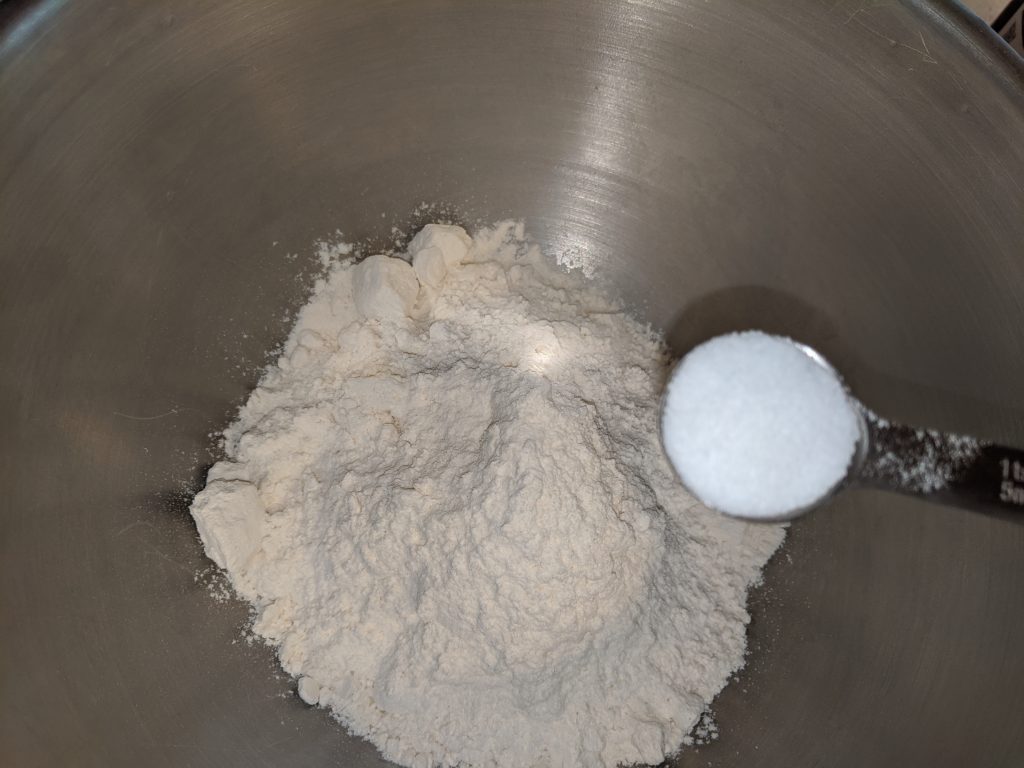
Add 2 tsp salt.
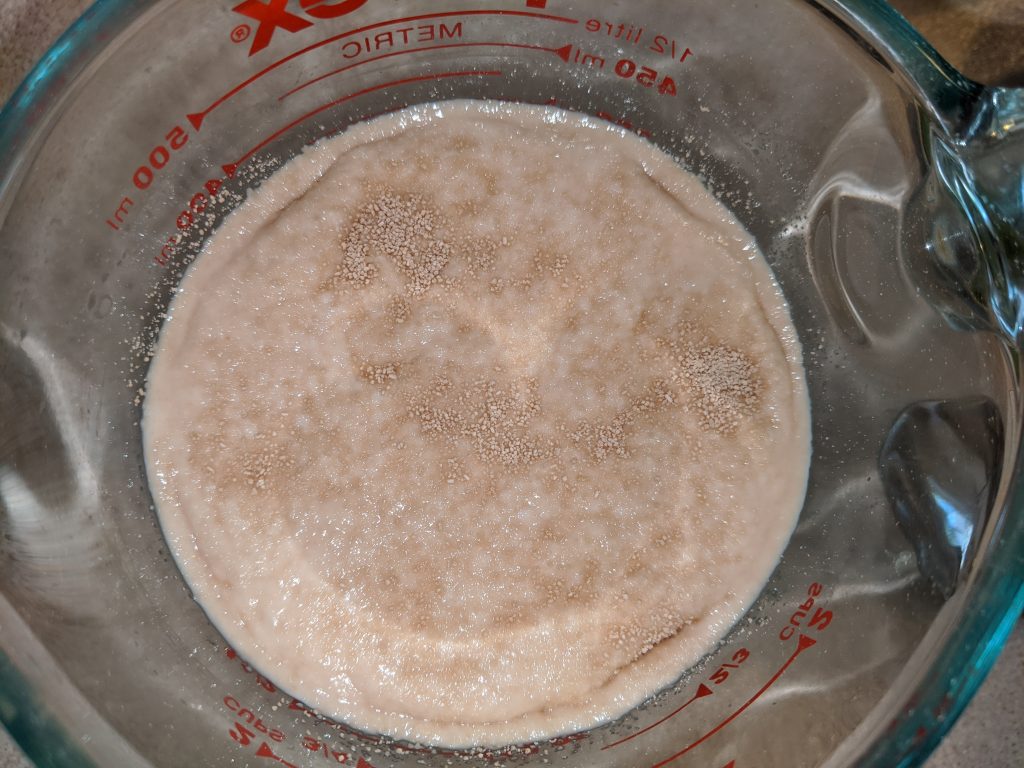
By now, the yeast should all be damp, and you should be able to see frothing. If not, give it a minute or two.
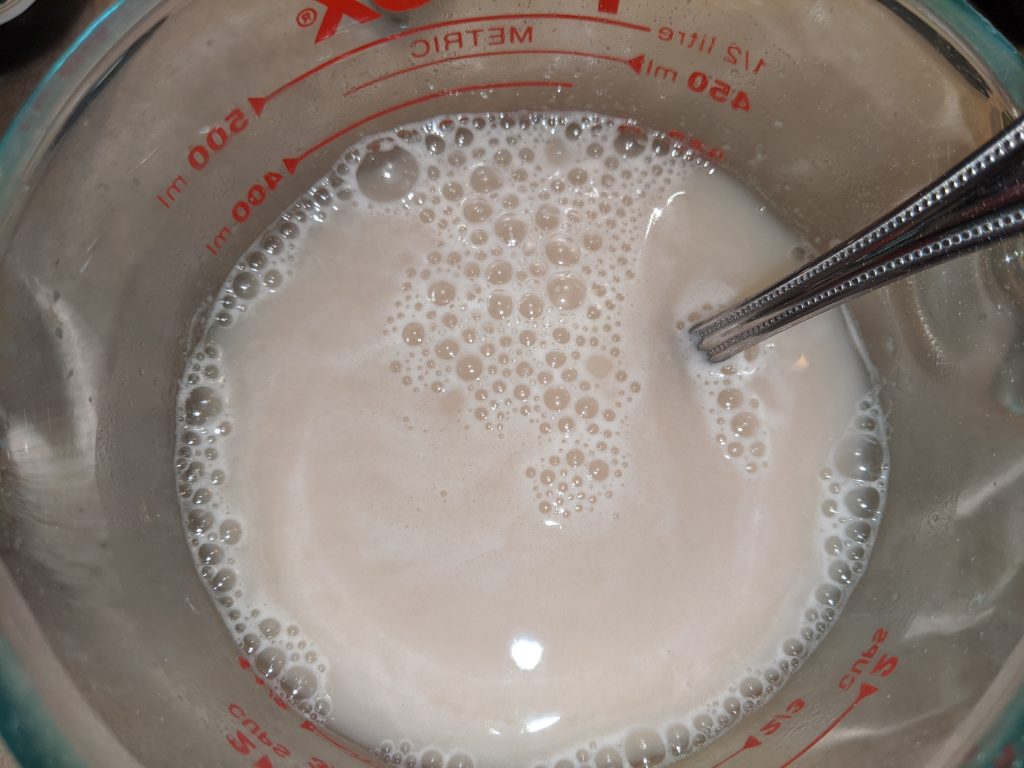
Use a tablespoon or whisk to thoroughly and gently stir the yeast into the water.
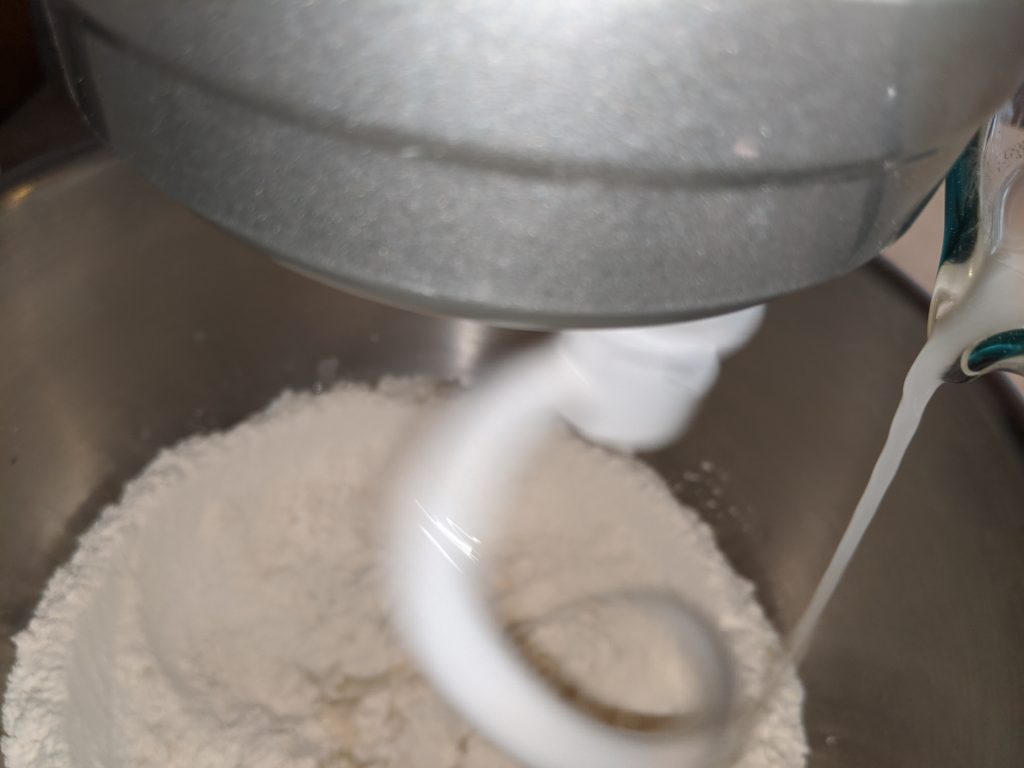
Put the bowl and bread hook on the mixer and start it running at speed two. Give it a minute to mix the salt into the flour, and then, with the mixer running, slowly drizzle in the yeast mixture.
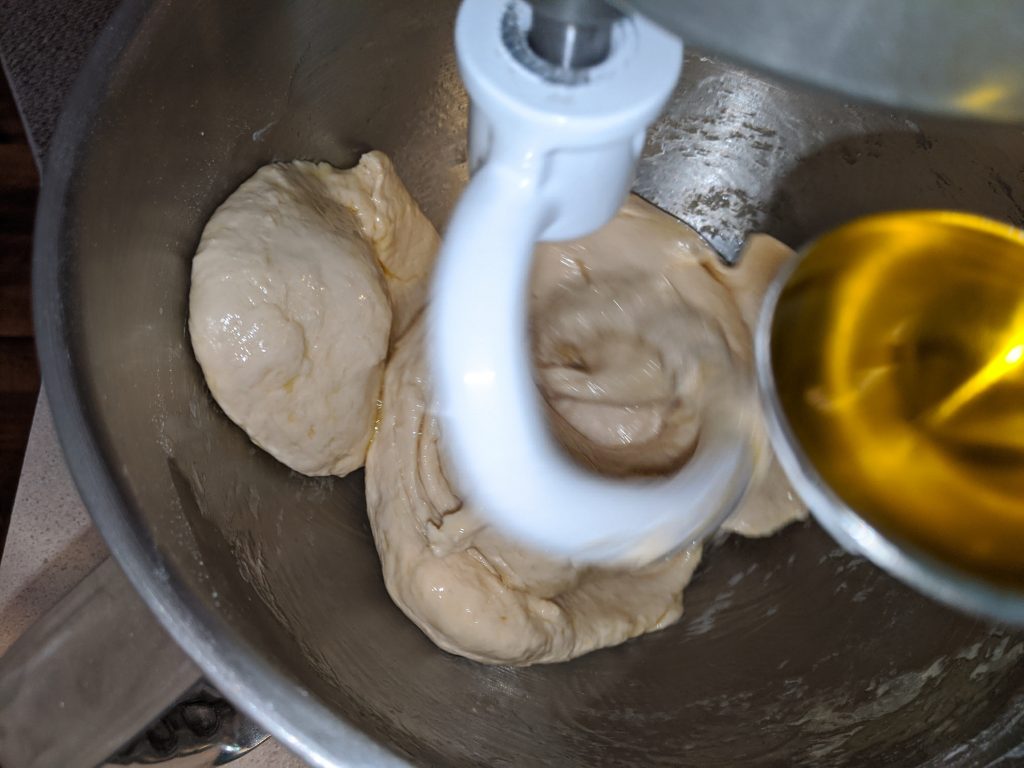
With the mixer still running, drizzle in the two tablespoons of olive oil.
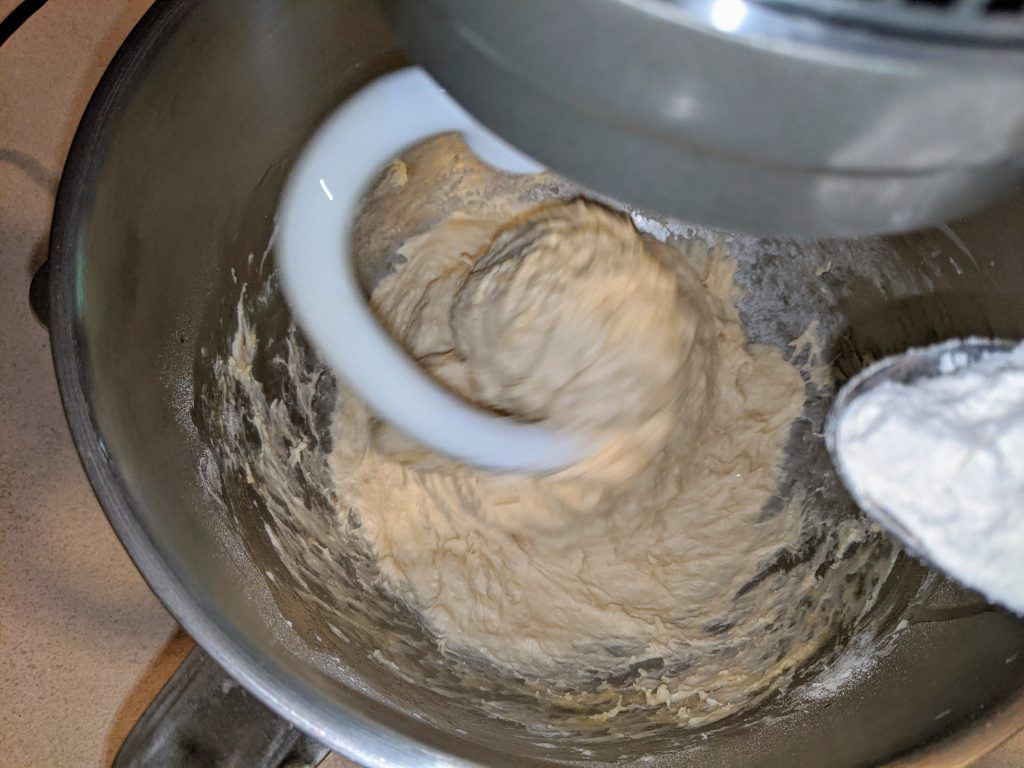
As the mixer runs, watch the mixture. It should be forming into a dough and pulling away from the sides of the bowl. If it’s sticking to the sides, add more bread flour a spoon at a time. You might have to add even more than 1/4 cup, depending on the weather.
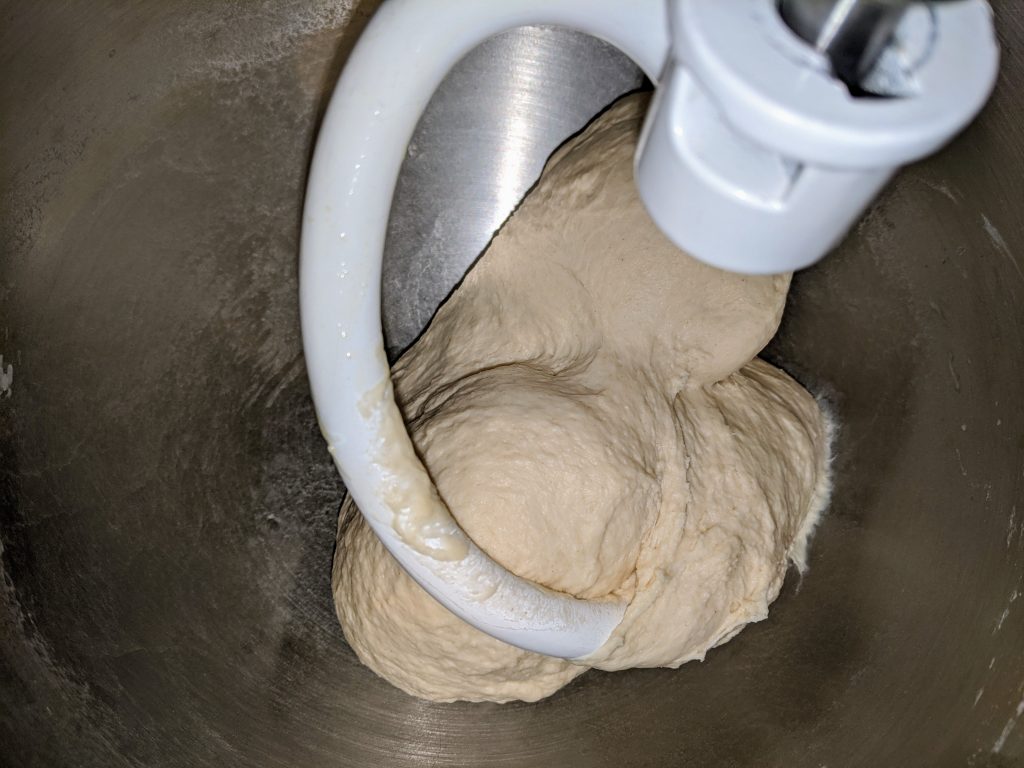
When you have added just enough flour so the dough is cleaning the bowl—and no more—let the mixer knead the dough. Keep an eye on it, and add a little more flour if it starts to stick.
Knead 5 to 7 minutes until dough is soft and smooth.
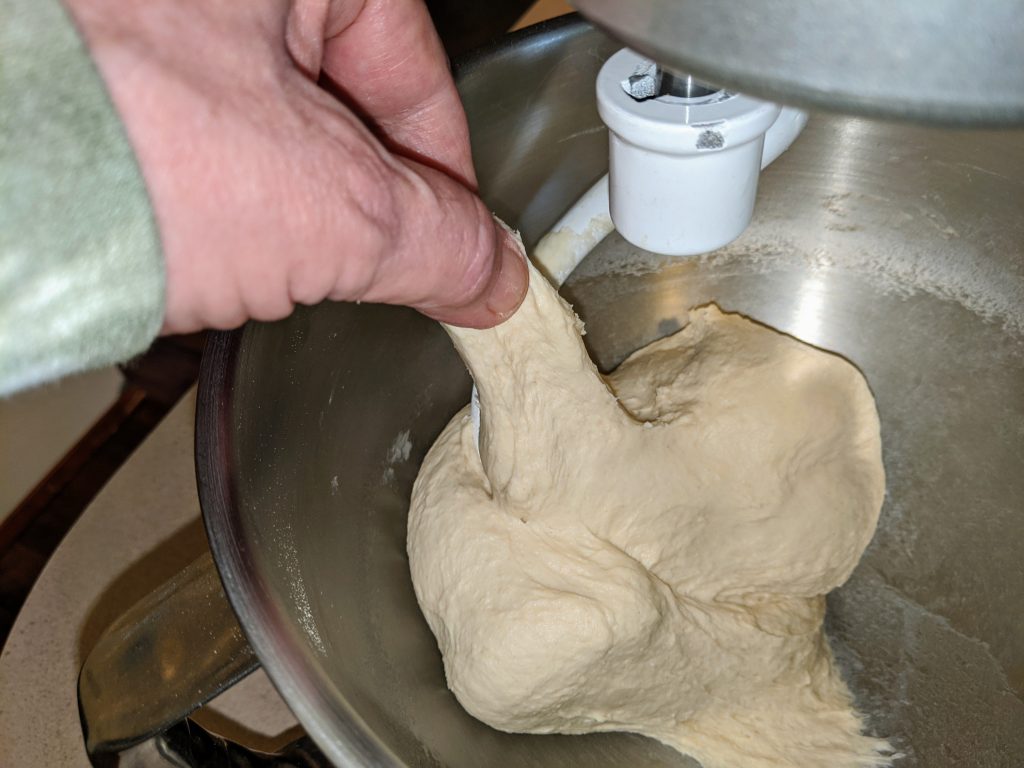
Test the dough by pulling up a pinch. It should be smooth and stretchy.
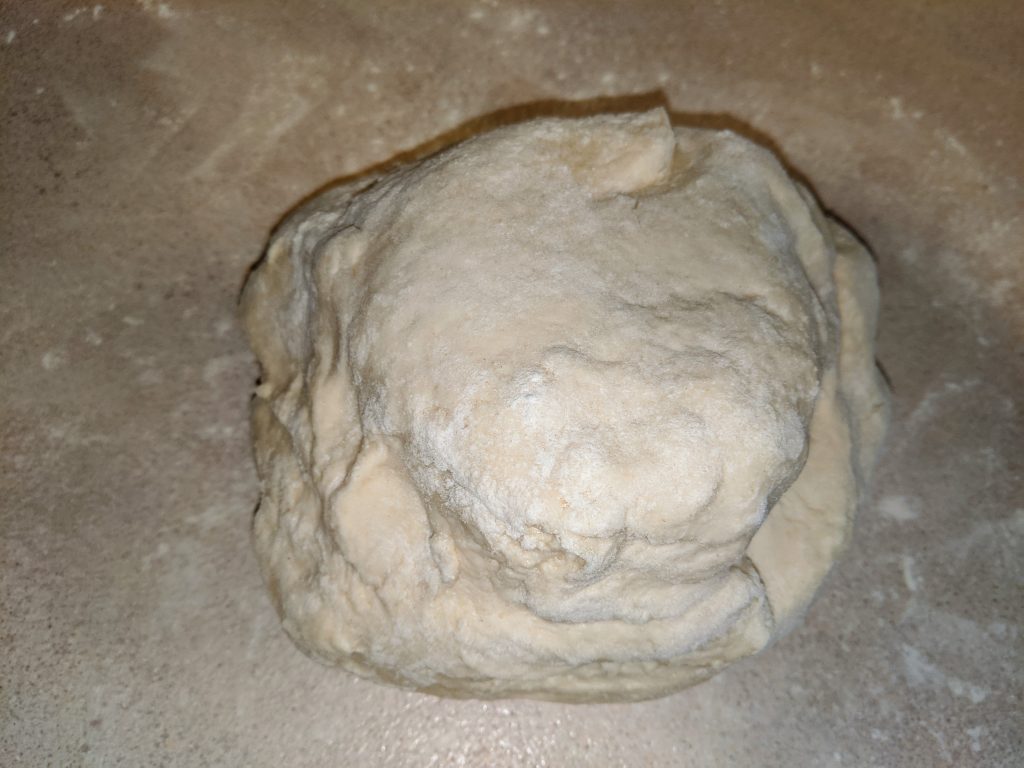
With floured hands, push the dough off the hook and pull it from the bowl, and sit it on a floured counter.
I just cheat and use all-purpose flour for my hands and the counter because it’s cheaper than bread flour.
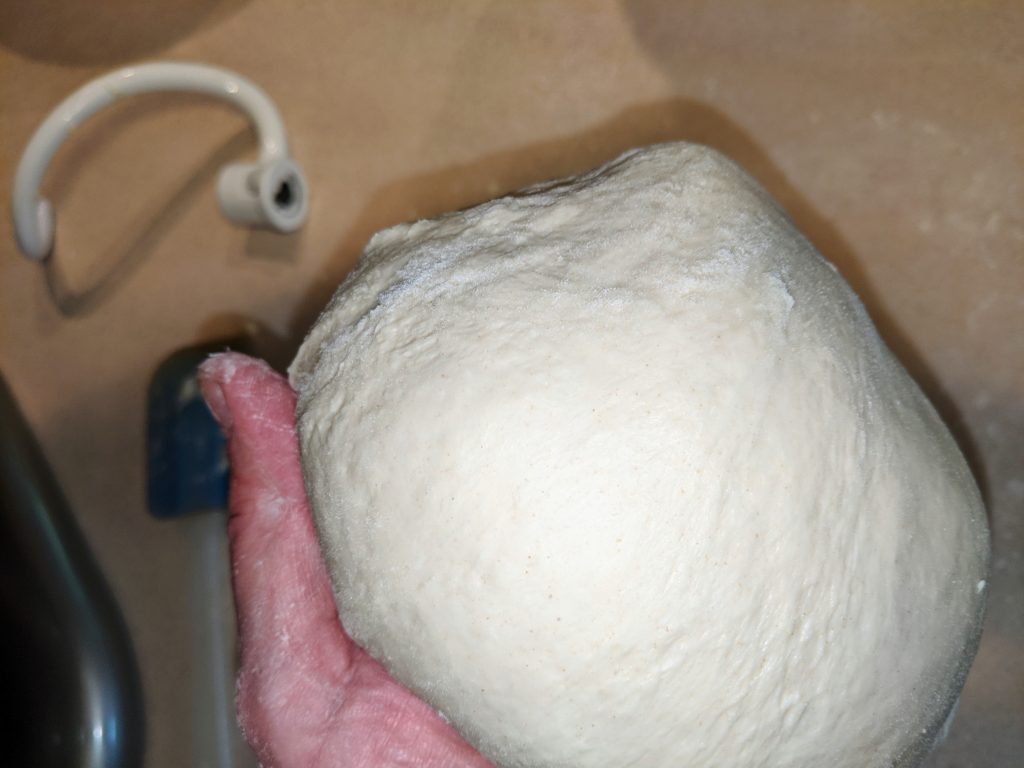
Hold the dough in one hand, and repeatedly stretch the top of the dough with the other hand, tucking it under. Turn the ball as you go, until the top is smooth and slightly stretched.
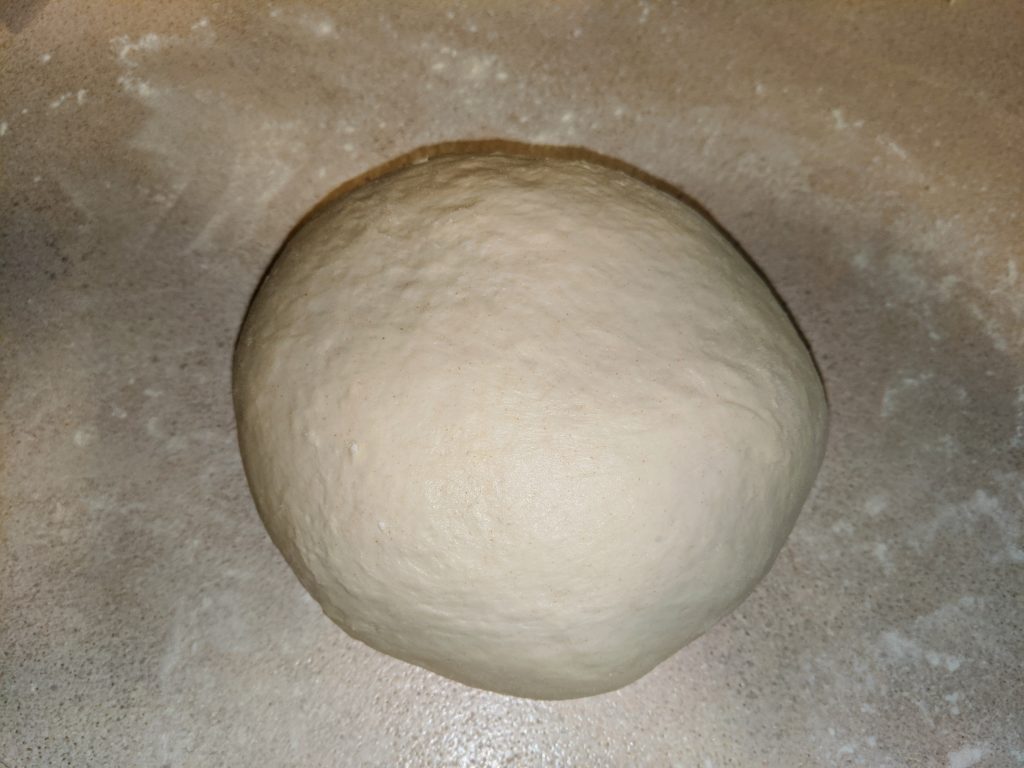
You should have a smooth round ball on top. Don’t worry about the stuff you tucked into the bottom.
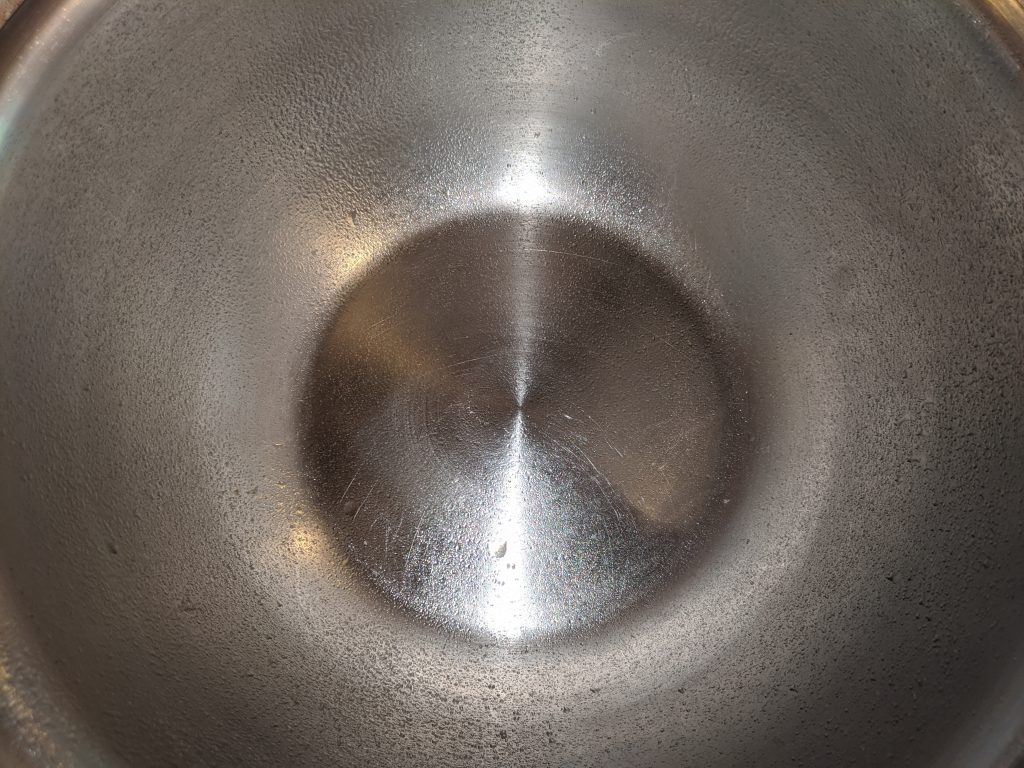
Lightly spray the inside of a large bowl with cooking oil spray.
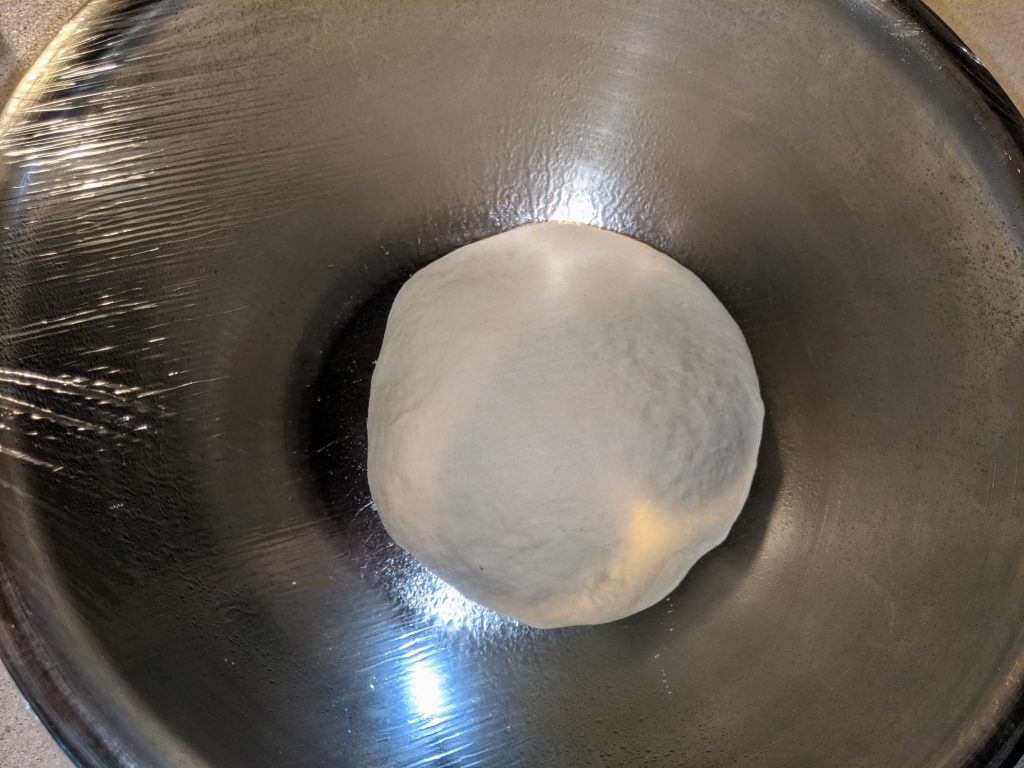
Put the ball into the oiled bowl, hit it with a quick light spray of cooking oil, and cover the bowl with plastic wrap. Keep it someplace warm, preferably about 70° F.
Allow the dough to rise approximately one hour.
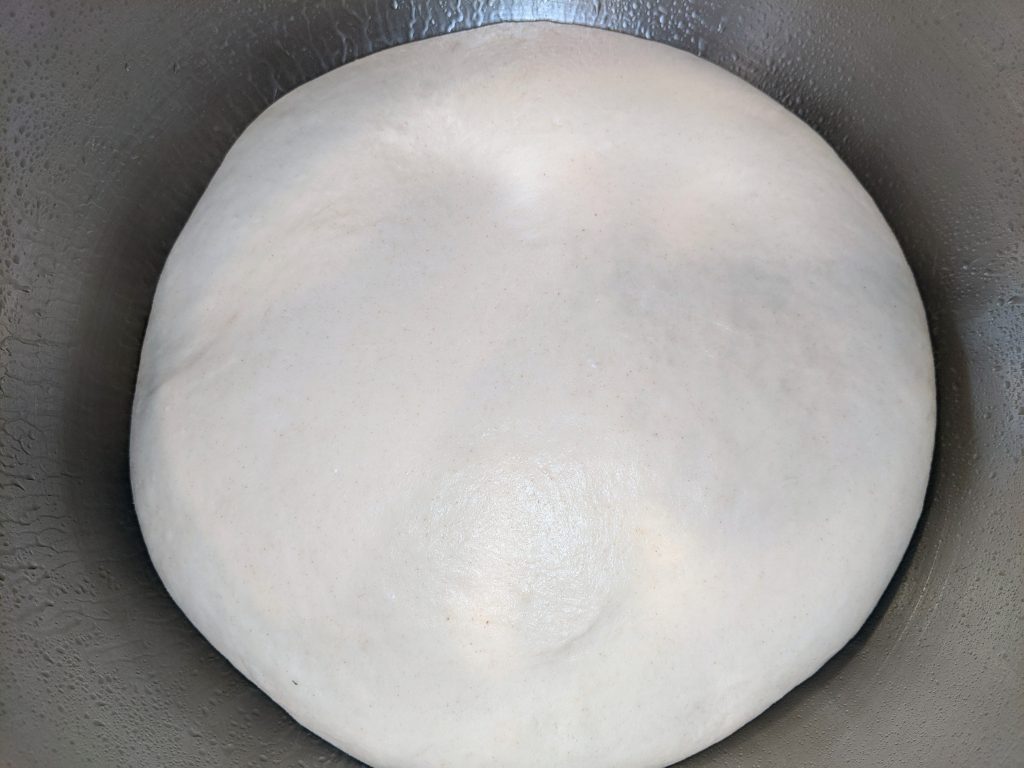
The dough should be doubled in volume. If it’s not yet, it’s okay to wait as long as it takes.
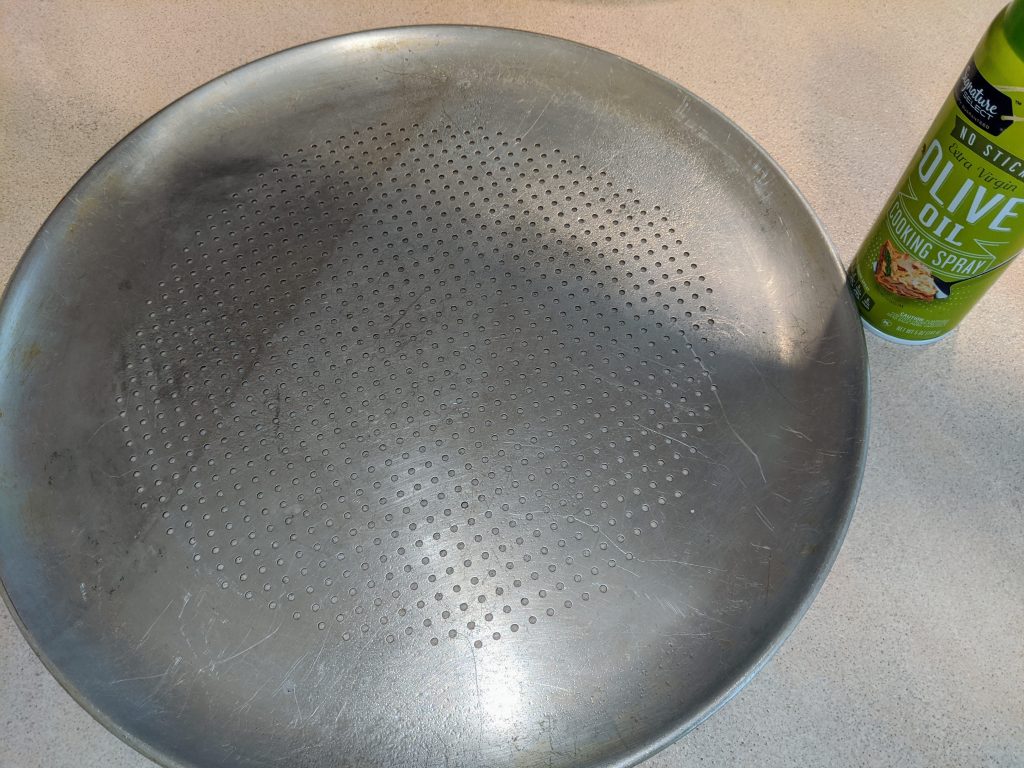
Lightly spray a pizza pan with a little cooking oil spray.
I like this pan with holes in it because it makes the crust crispier. You can use one without holes, or a pizza stone, if you have one.
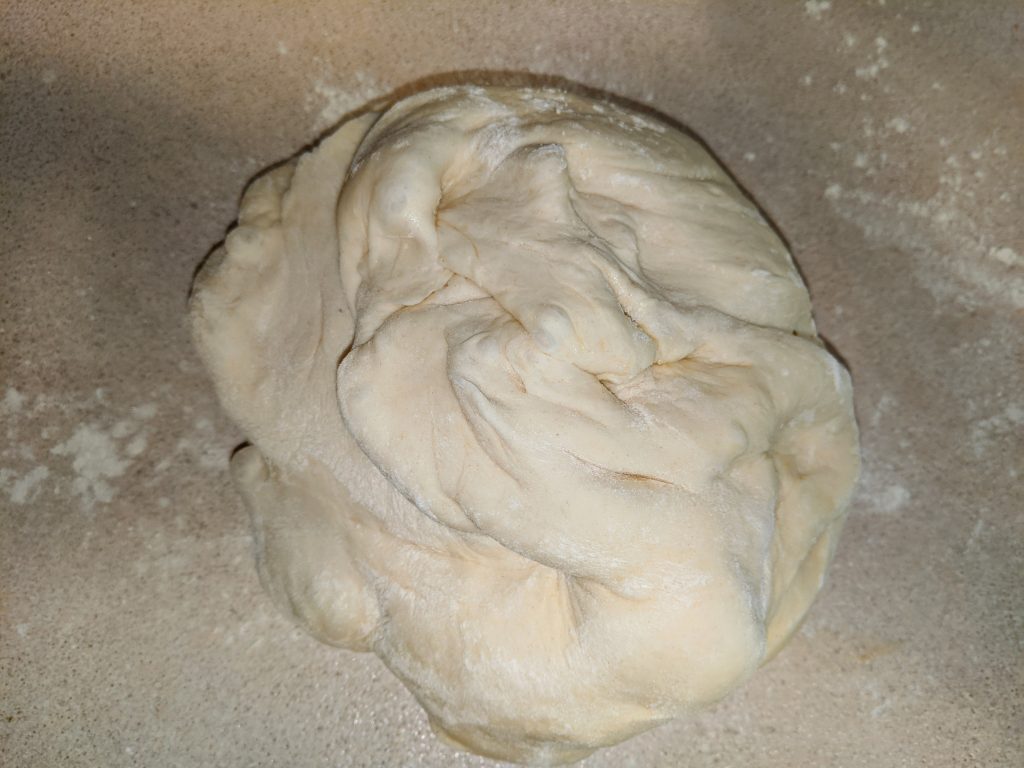
With floured hands, take the dough out and place it on a floured counter. Use your hands to deflate the rise.
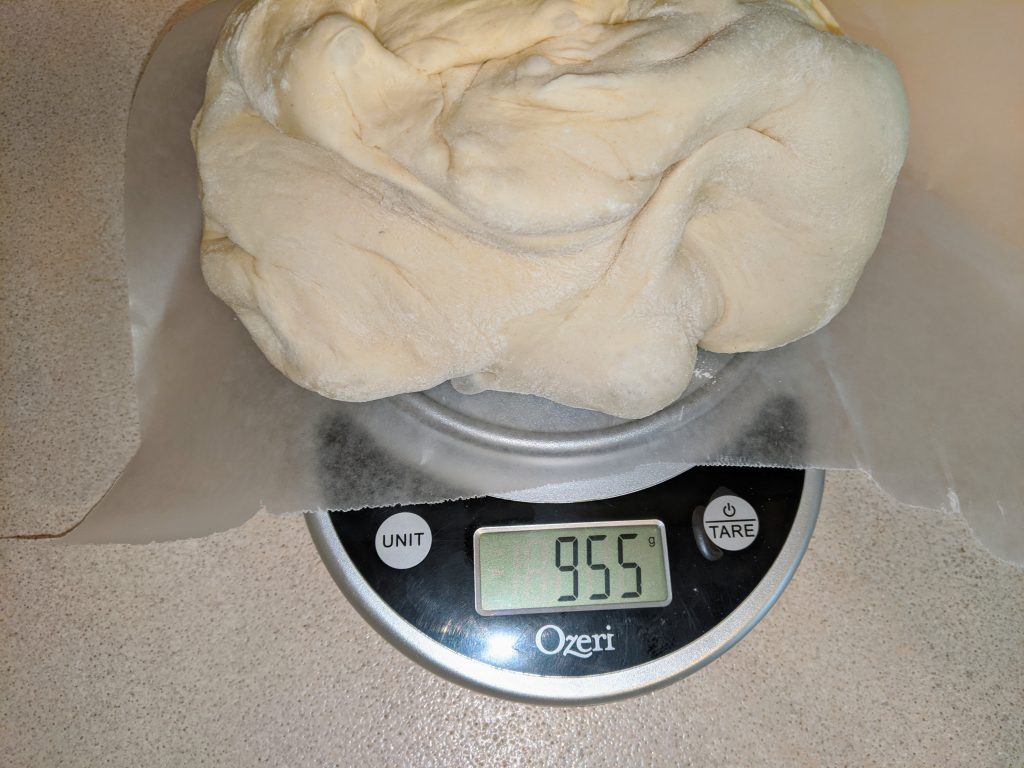
Break the dough into two equal pieces or cut it with a dough cutter.
I suggest weighing the dough to be sure the two pieces are the same size. I’ve been off a lot more than I thought.
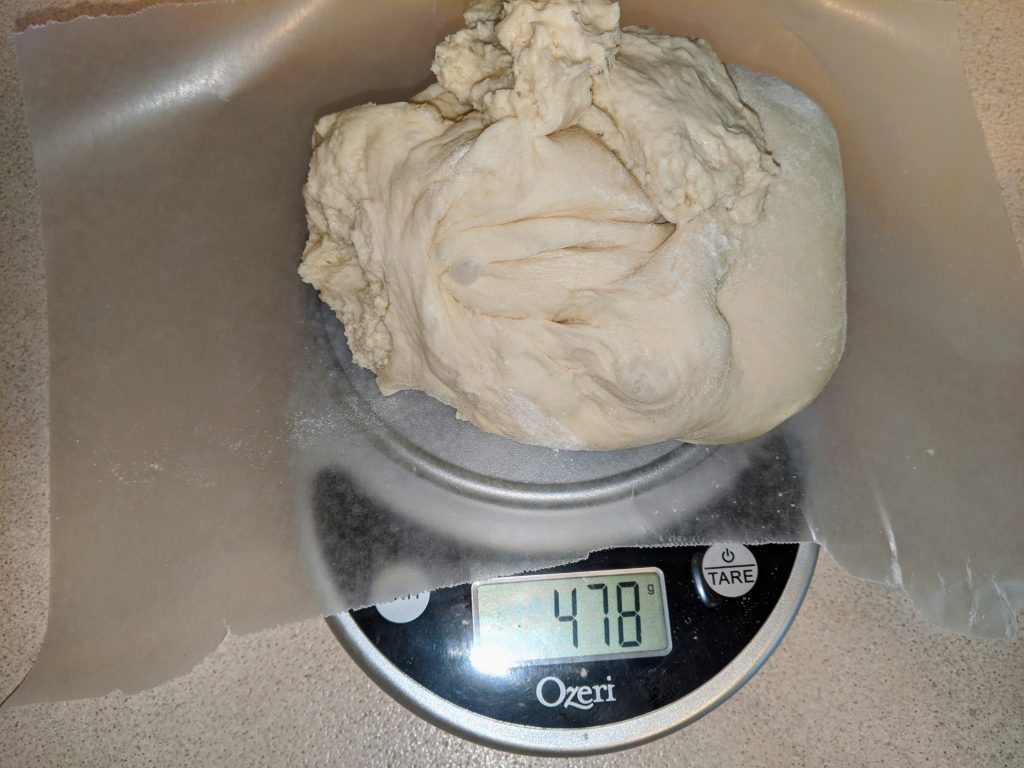
Weigh each of the two pieces and adjust until they are the same weight.

Stretch each ball the same way as you did above for the entire dough. Use one hand to hold the dough and stretch and tuck with the other.
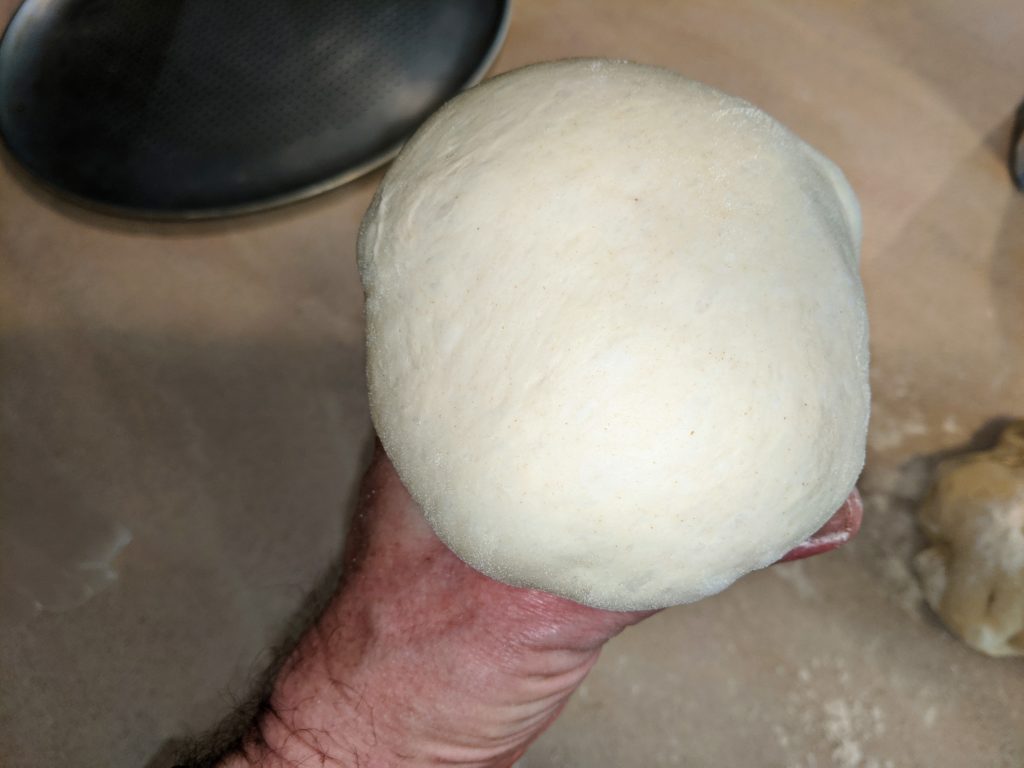
With a ball this size, as you tuck it under, use your hand to keep it stretching.
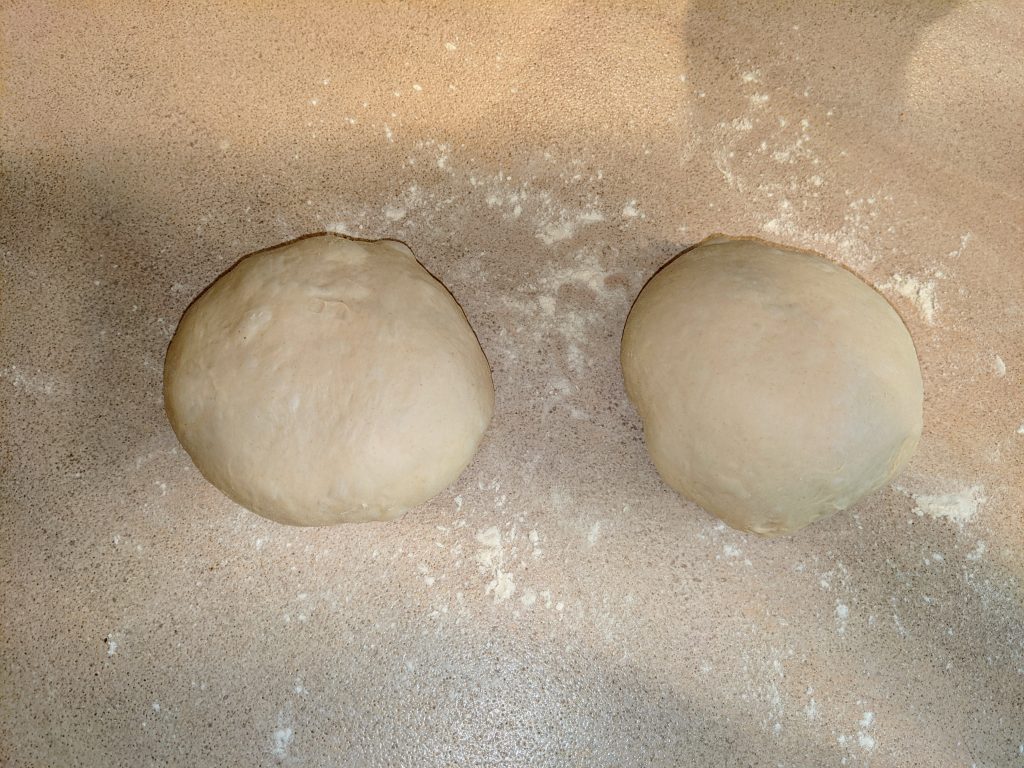
Place the two dough balls on the floured counter.

Cover with a kitchen towel.
Wait 10 minutes for the dough to settle.
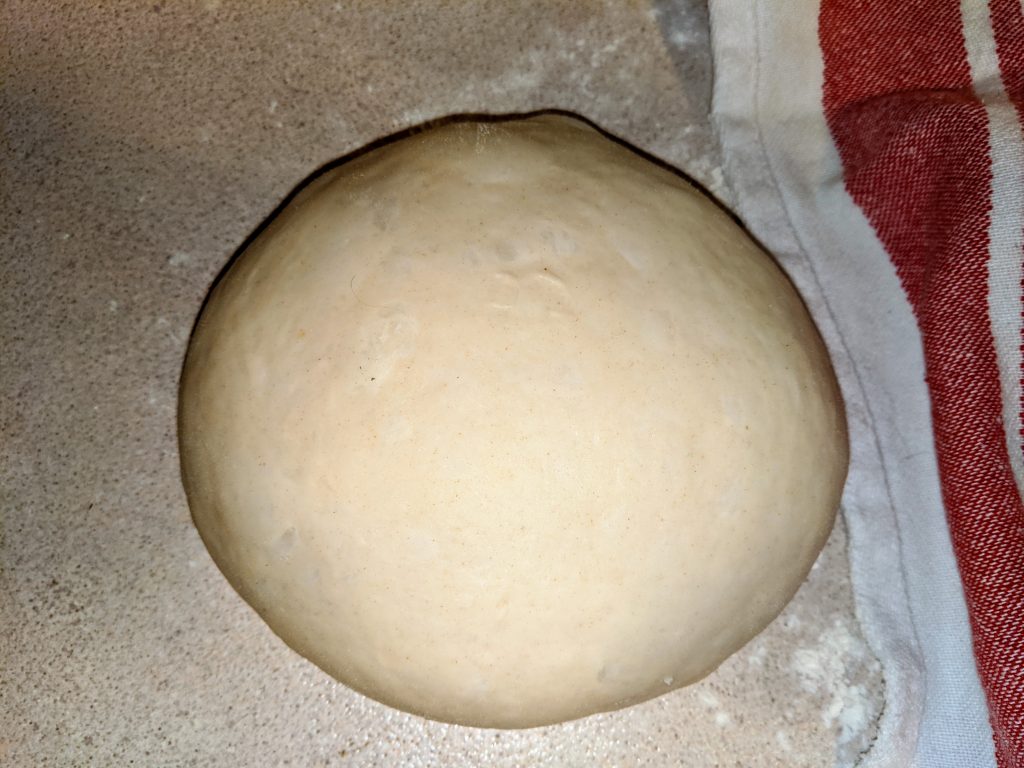
The dough will have risen slightly and will be very smooth, soft, and supple.
Preheat the oven to the temperature for your pizza recipe with the rack in the center.
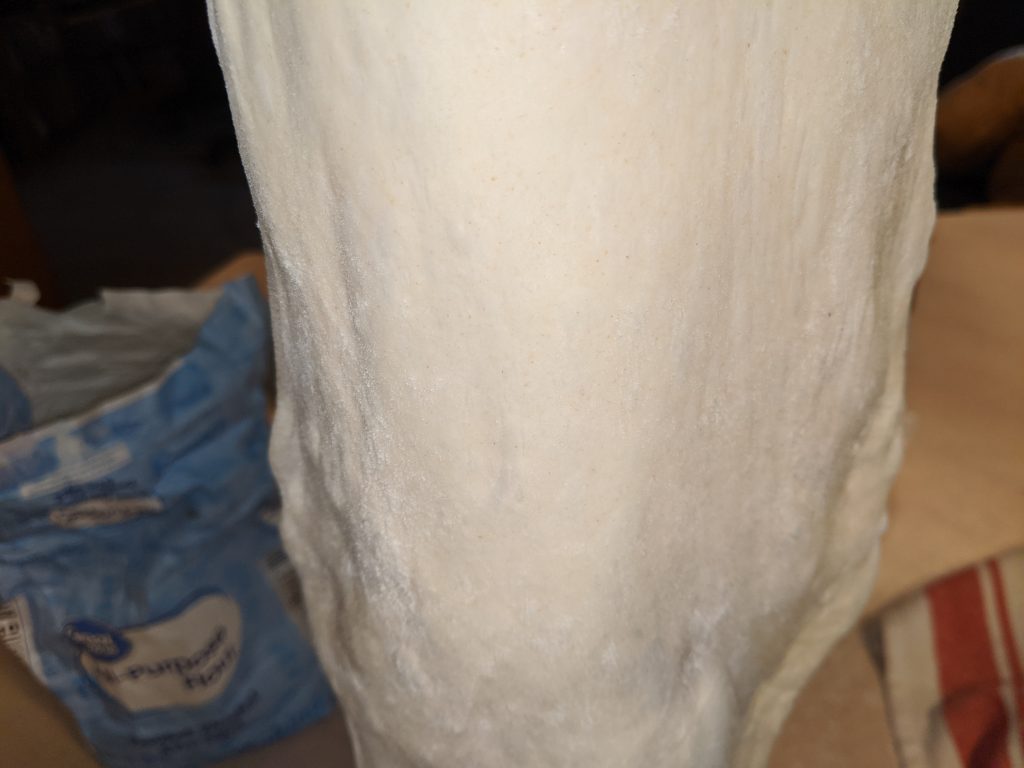
Flour your hands and keep the dough floured just enough so it doesn’t stick to you. Hold the edge of the dough in one hand and stretch it out with the other hand, allowing gravity to do most of the work. Turn it as you stretch it.
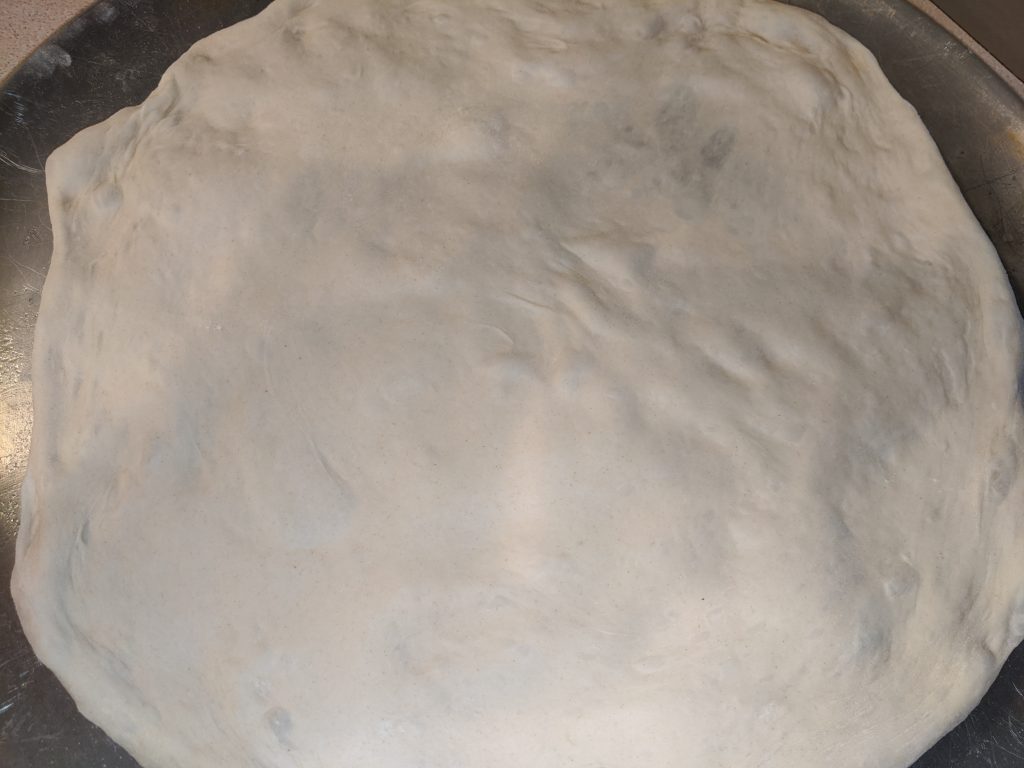
When the dough is mostly stretched, lay it out on the oiled pan, and pull it into shape.